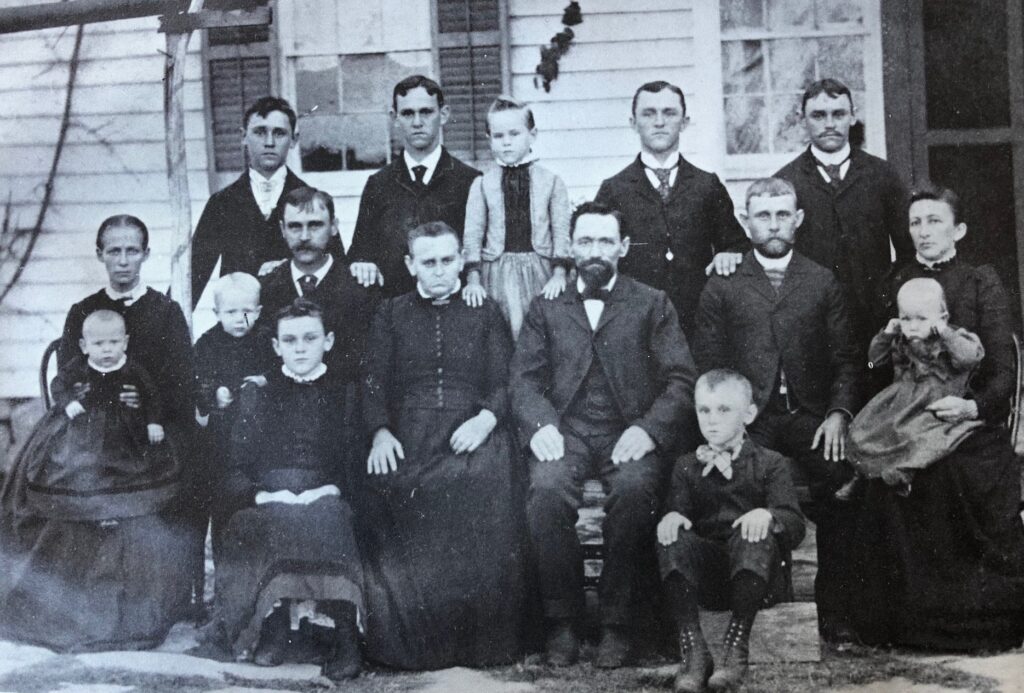Johann Härtling, of the Saxony, Germany area of Pöppeln, was the father of Andreas, Andreas the father of Hermann, who immigrated to the United States of America, Hermann the father of Adolph Martin, Martin the father of Benjamin, Ben the father of Vernon, Vernon the father of three sons and three daughters.
I am one of those three daughters.
More than 235 years since Johann, that bloodline still lives on today in both my children and grandchildren.

Genealogical rolls trace a lineage, preserving the past for future generations. Each name represents a face, a life lived. Each one a link connecting from earlier days to what is still to come. Each with a story to tell.
This is the genealogy of Jesus the Messiah the son of David, the son of Abraham.
It is with a genealogy that Matthew begins the first book of the New Testament of the same name (Matthew 1). Matthew unfolds the story of the Christ child’s coming by looking back to the Old Testament — from Abraham to Jesus. Albeit, not something you usually expect in your traditional Christmas card generally filled with angel announcements, accounts of shepherds, and images of a newborn baby asleep in a manger.
Woven within the letters of each name listed is the unfolding story of God’s faithfulness flowing from generation to generation as He fulfills the promise first made to Adam and Eve in the garden (Genesis 3).
In linking Jesus to Abraham, Matthew brings us straight away back to the promise of God’s rescue plan for the world. Jesus is the long-awaited son of Abraham who will bring God’s blessing to all humanity.
… and all people on earth will be blessed through you. Genesis 12:3
The promised son of David. Matthew confirms Jesus’ human origin, the royal successor and legitimate heir to the throne of David’s kingdom (Matthew 22:42-46). The King for whom all of Israel was waiting.
A shoot will come up from the stump of Jesse; from his roots a Branch will bear fruit. Isaiah 11:1
Then in a rare move, Matthew breaks with tradition by listing four women. The background stories of these four make their inclusion even more extraordinary: Gentiles, widows, tarnished pasts. Matthew shines light on God’s amazing grace.
For generations God has been using all types of people to move His plan forward. Real people. Imperfect men and women who have lived flawed lives, making poor choices, living life away from God.
Three sets of names. Three key periods in history. As one biblical scholar writes, “One gets the impression that Matthew pored over his Old Testament records until he could find the most questionable ancestors of Jesus available in order, in turn, to insert them into his record and so, it seems to preach the gospel — that is, that God can overcome and forgive sin, and can use soiled but repentant persons for his great purpose in history.”1
I Never Asked Blog
What about your story? Where Scripture’s first genealogy recorded in Genesis 5 underscores death — “and then he died” — the genealogy of Jesus does not end. Matthew emphasizes that Jesus came to save “his people from their sins.”
No matter your background, your pedigree, your last name, you can be part of Christ’s inheritance both now and throughout eternity. By faith in Jesus, you can be counted as one of God’s children.
Ah, dearest Jesus, Holy Child,
Make Thee a bed, soft, undefiled,
Within my heart, that it may be
A quiet chamber kept for Thee.2
Photo: Far left, my grandfather, Ben Haertling, is seated on the lap of his father, Martin Haertling.
1 Fredrick Dale Bruner, The Christbook: A Historical/Theological Commentary, 1987
2 Martin Luther, From Heaven Above to Earth I Come, 1535